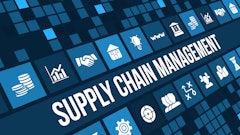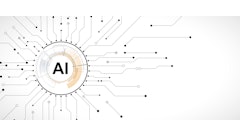
You’ve probably already seen commercials or social media posts where the protagonist stares inquisitively into their pantry, contemplating what they can make for dinner. It’s clear that they should have restocked earlier, as they survey the remnants of their last visit to the grocery store. In the age of AI, they can use their trusty AI assistant to identify a tasty recipe using the available odds and ends. While this comes across as a niche application for most people, the gears in production planners' minds start turning.
The scenario described in these commercials is “a day in the life” of a production planner. As soon as there is a hiccup in manpower, materials, or machinery, the seamless vision laid out by the master scheduler starts to unravel. Production planners jump into action and perform triage by expediting parts and updating order sequences so that operations lose as little ground as possible until they can recover and return to the planned schedule.
Of course, a production planner’s day job is typically a lot more challenging than crafting dinner. Dinner is one “production order” with maybe a dozen ingredients. Production planners often manage dozens of open orders that involve assembling hundreds of parts. Lean production practices compound the challenges. The flexibility of holding large volumes of inventory was traded long ago for the financial benefits of increasing inventory turns. So, when Murphy’s Law strikes and disrupts operations, and the production planner stares into the warehouse inventory, how do they decide what to do? There are often a lot of viable options, which can make deciding the best alternative the most challenging aspect.
The first decision is the most important: “What is the goal?” Is the goal to optimize production so that the backlog doesn’t grow, return to schedule as quickly as possible to mitigate order delays, or expedite high-margin orders so that the plant achieves its end-of-quarter profitability goals? The strategy will change depending on the economic environment and customer expectations. It is easy to prioritize mitigating delays when customers are waiting for bespoke products—less so when you’re in a build-to-stock situation, trying to replenish a distribution center.
All said, your optimization strategy often changes, so lessons learned during your last recovery effort are often unique and not applicable to future events. These situations are difficult to model since the exact situation and goal don’t align that frequently. You need a flexible tool that can quickly model and assess thousands of possible permutations. AI tools excel in these ambiguous situations where there are multiple degrees of freedom that you’d like to optimize and evaluate using different criteria.
Historically, production planners have gained a “sixth sense” after resolving these issues daily. After approximately five years, they have logged the prerequisite 10,000 hours to master the subject and developed a peculiar ability to see patterns in the chaos and recover operations back to schedule. When asked how they successfully manage these situations, they often struggle putting their expertise into words. The patterns and strategies they describe to most people unfamiliar with the art come across as pseudo-science at best. No one is satisfied with a “just trust me” explanation, even when the answer turns out to be right.
Now that AI models can run thousands of scenarios in minutes, they can expose the interactions between various parameters that previously took years to formalize from disparate examples. With computational beasts at their disposal, modern planners can brute force solutions that vastly exceed their years of experience. Intermediate users gifted at exploiting AI tools shave years off their training and are positioned to address the most challenging situations. Seasoned planners can use AI tools to help them articulate their inherent knowledge and accurately weigh the impacts of various parameters that they struggle to communicate.
Replacing ad-hoc on-the-job training with structured scenario modeling yields several benefits beyond production planners' rapid training and upskilling. Firstly, accelerating the learning curve helps mitigate the loss of institutional knowledge due to burnout, age-out, or general attrition. Factories relying on years of mentoring and on-the-job training to develop production planners are at serious risk. Secondly, beyond representing a single point of failure, production planners are inherently a single perspective and subject to bias. Having the luxury of running and ranking multiple recovery plans makes the process both more explainable and transparent.
AI-enabled production planning tools with optimization capabilities are in their infancy. By enabling the analysis of multiple scenarios, the impacts of disruptions can be identified and provisions put in place to mitigate the worst cases. Production planning as an art involves quickly reacting to unforeseen changes. Production planning as a science is predictive and preventative in nature. You foresee what can go wrong and make provisions to mitigate those risks. Even though your best plans can still be overcome by events outside the norm, the job is fundamentally different. AI scenario modeling holds the promise of turning a hard-learned art into a science.



















